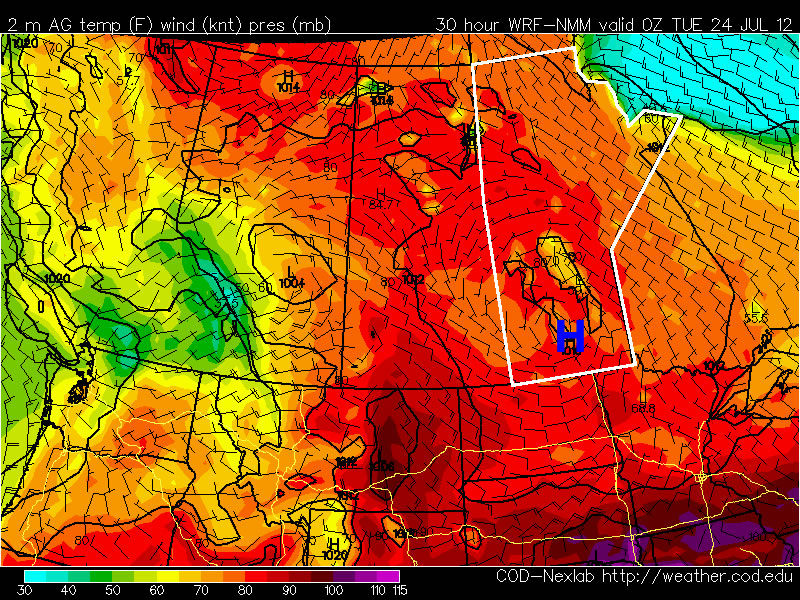Southern Manitoba will quickly heat up to be extremely hot for the later half of this week, while any rain/thunderstorms will remain fairly elusive through the Red River Valley.

You might need one of these on Thursday.
A strong thermal ridge will start pushing it’s way into Manitoba toady with 850mb temperatures of 22-24°C. This will really crank up the heat over the Red River Valley. Today will be our coolest day over the next few days, with temperatures “only” climbing to 27°C with light winds from the north. There will be some clouds around today and a very slight chance of a shower or two late this afternoon as the warm front starts pushing into Southern Manitoba. Winds will shift to the south overnight tonight, with a low around 18°C.
The southerly wind should help clear the air of any haze and smoke that’s remaining in the Red River Valley, which will allow the full power of the sun to help cook the atmosphere on Thursday. 850mb temperatures will climb towards the mid-20’s, which will help surface temperatures easily climb into the mid-30’s. Two uncertainties exist to the daytime high:
- Moisture. The higher the dewpoint is, the more energy it takes to heat it up. That makes it harder to reach really high temperatures when the dewpoints are high than when the air is dryer. For Thursday, the NAM currently predicts dewpoints to be right around 20°C, the GFS pumps dewpoints up to nearly 25°C, and the GEM has them right around 22°C.
- Wind direction. Winds will be southerly to start the day, however a weak trough pushing across the RRV should start to shift the winds to southwesterly. When a southwesterly wind is in place over the RRV, it helps to increase daytime highs by a few degress as the wind downslopes over the western escarpment and heats up a little bit. The air often drys out a bit in this process as well, which aids in helping the temperatures increase a bit.
Should the moisture end up being on the lower side and we do get a southwest wind in place over the the RRV, temperatures could potentially shatter our previous hottest day of the year. Models indicate temperatures of 37-40°C are possible over the southern RRV, while temperatures of 34-37°C can be expected over the northern RRV. I’d be very hesitant to say we’re going to hit 40°C in Manitoba on Thursday, especially with dewpoints in the 20’s. It will certainly be an extremely hot day, and when the temperature and the dewpoint are taken into consideration, widespread humidex values of 40-45 will be seen across Southern Manitoba with the potential for isolated spots to see even higher values. Either way, it’s almost certain we’ll see temperatures at least in the low-to-mid 30’s over the RRV, with humidity making it feel much closer to the low 40’s.
Things will cool off a bit on Friday as some less-warm air filters in aloft. 850mb temperatures are expected to drop to a more modest 15-20*deg;C, which will cap daytime highs to “only” 30 or 31°C. Dewpoints should also be a good 3-5°C lower, making it a slightly more comfortable day.
There’s a slight chance of a shower or thundershower on Thursday evening over the more northern portions of the Red River Valley, although any activity will likely stay in the Interlake region. Our chances for showery weather increase into the weekend as cooler air beings to inflitrate it’s way in aloft while down here at the surface we remain near the nose of a thermal ridge. Highs will remain in the high 20’s through the weekend.




